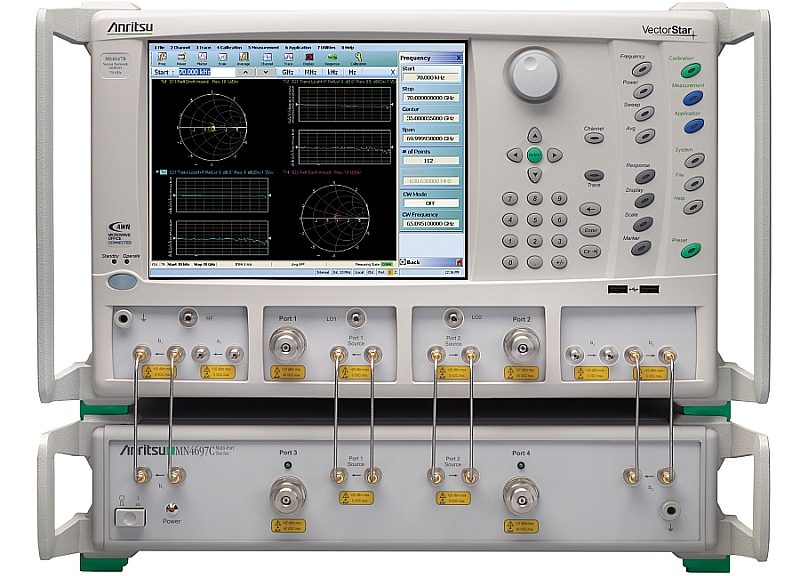- Anritsu unveils a solution capable of performing full differential noise factor characterization on differential components used in high-speed wireless communication systems.
- This new VectorStar Vector Network Analyzer (VNA) differential noise factor measurement option verifies the receiver performance of low noise amplifiers and other components used in the front module of 5G backhaul and microwave systems.
- The option is available on VectorStar models operating from 70 kHz up to 20 GHz, 40 GHz, 70 GHz and 110 (125) GHz.
The new differential noise factor measurement option improves the noise factor measurement capability from a single 2-port end of the VectorStar Vector Network Analyzer (VNA). This allows 3 and 4 port components to be measured from a single end, in differential mode or common mode, with different processing options. The differential noise factor measurement option uses the same measurement technique as the 2-port non-differential Cold Source method. This, according to Anritsu, minimizes disparity errors and offers better accuracy compared to the conventional Y-factor noise source method. The new improved noise factor measurement option enables vector correction levels to be achieved on 2-port and multi-port components with greater accuracy, especially when mismatch is significant.
The analysis of correlated and non-correlated noise measurement can be performed using the new differential noise factor measurement technique. Thus, according to Anritsu, “a more complete characterization of the actual component performance is obtained, which allows more reliable design results to be obtained. This method is therefore more appropriate than conventional approaches, which integrate an RF balun component with only a description of the S parameters or neglect correlation
between device under test (DUT) output ports. This leads to an incorrect characterization of the differential components. »
Accuracy is further ensured by a range of network tools for VectorStar. For example, VNAs have the ability to embed or de-embed single-ended and differential probes and other networks during the on-wafer noise figure measurement process and correct receiver calibrations for other setup changes. The result is, according to Anritsu, more accurate noise figure characterization of differential devices in an on-wafer environment.
The VectorStar MS4640B vector network analyzers offer a wide analysis bandwidth on a single instrument, ranging from 70 kHz to 70 GHz. The bandwidth can be extended to 145 GHz or even 1.1 THz in very wide band configurations. VectorStar is a VNA platform offering the possibility to measure the noise factor, in a single end and differential configuration, from 70 kHz to 125 GHz.






